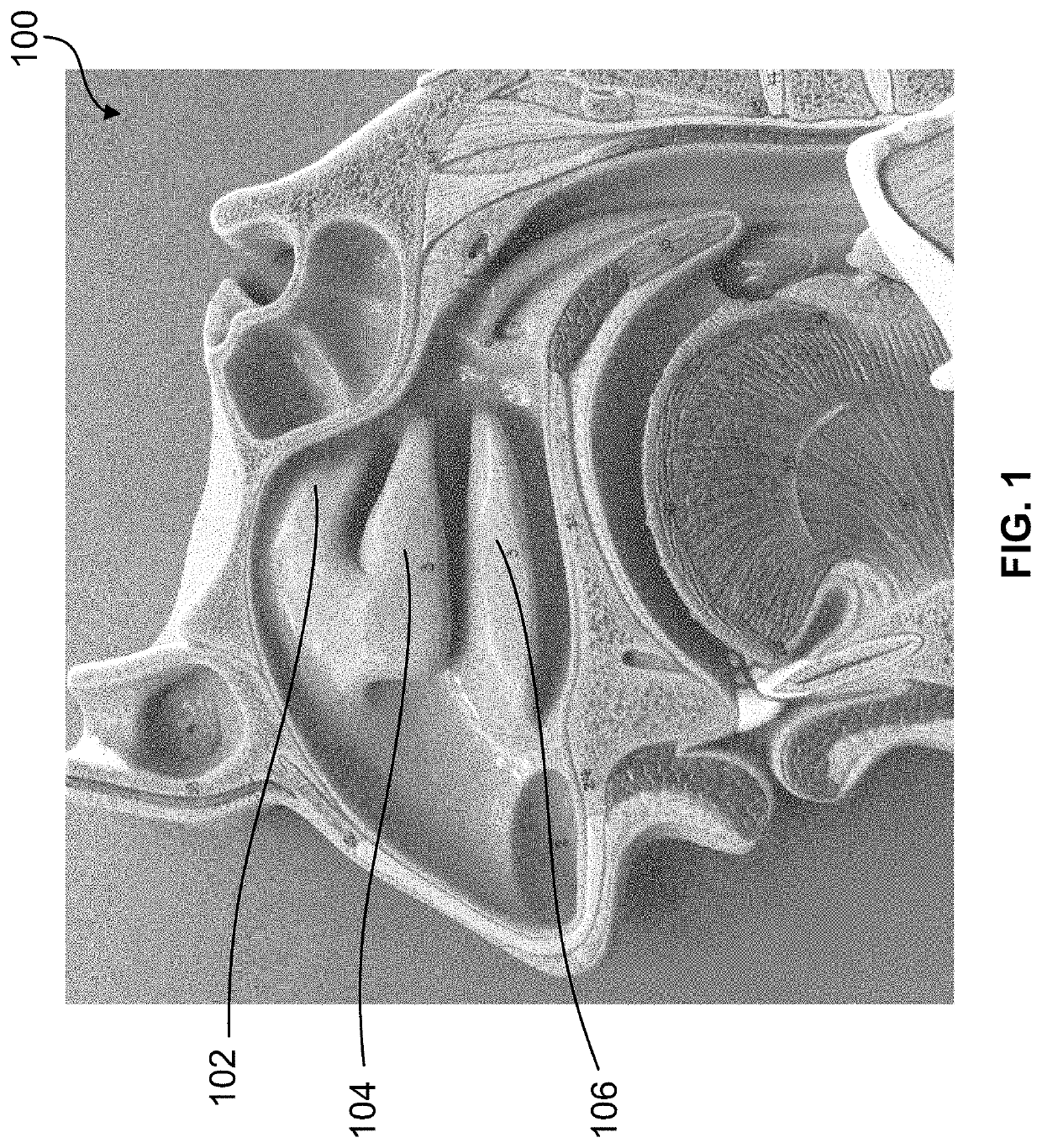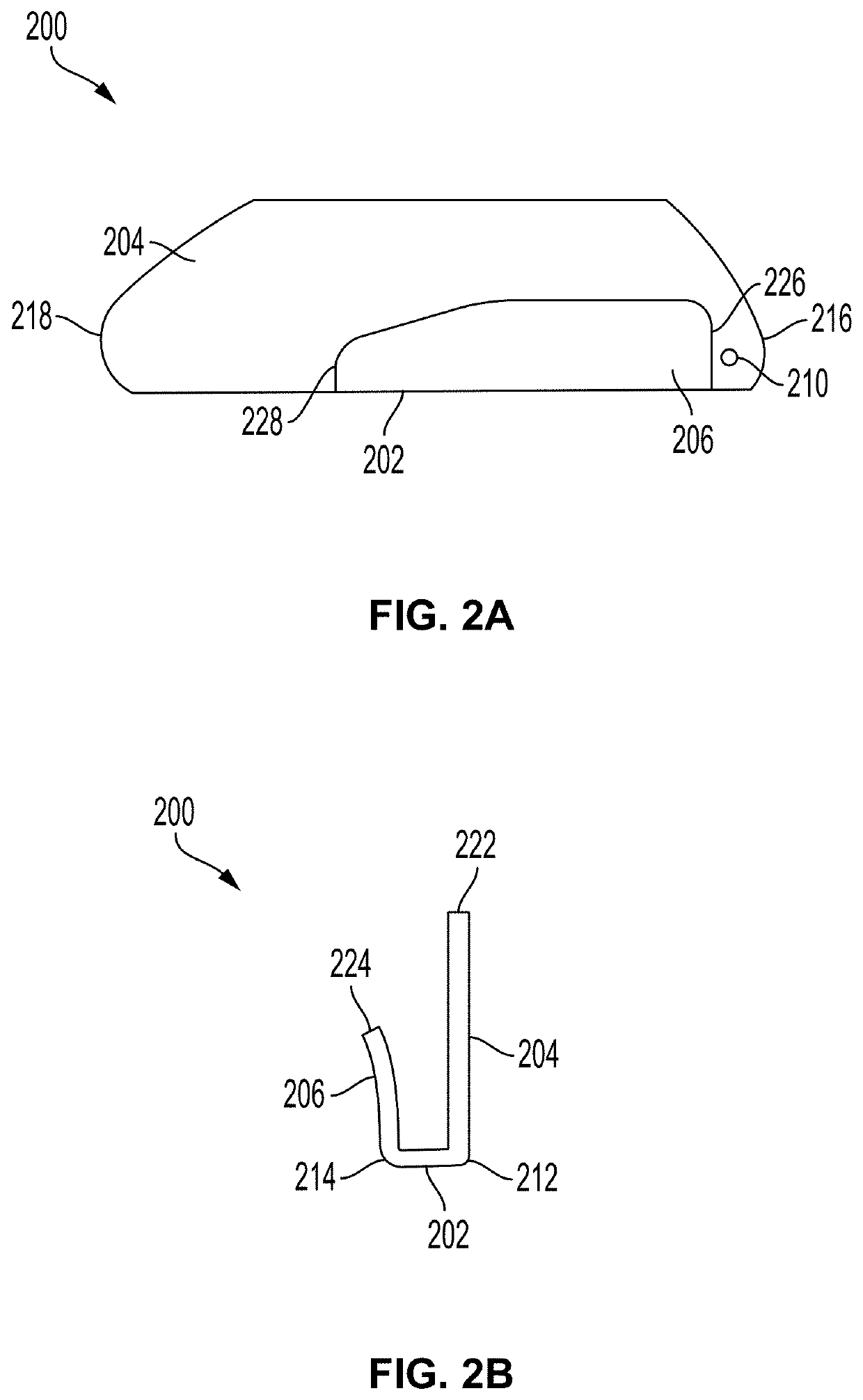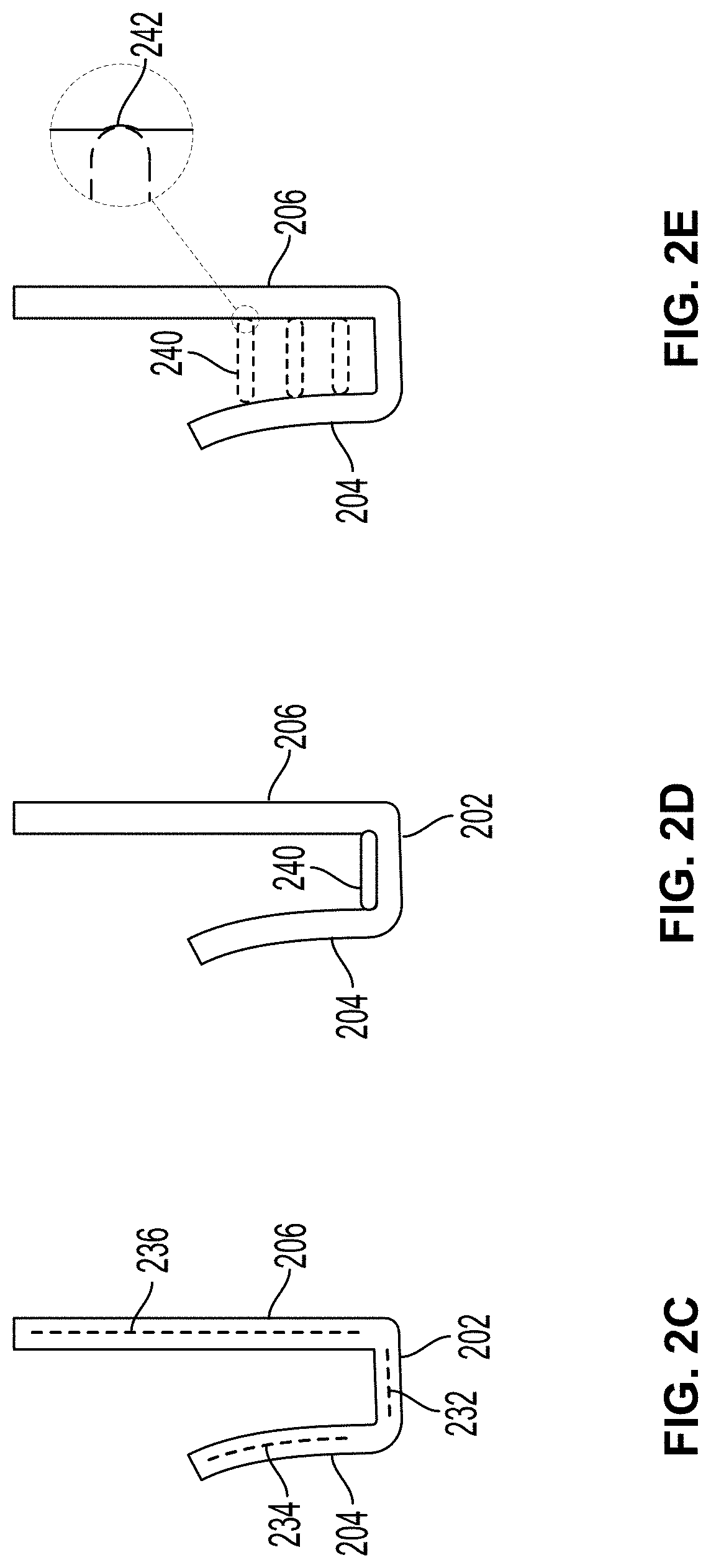Nasal device and methods of use and manufacture
a technology of nasal passages and stents, applied in the field of nasal passages, can solve problems such as collapsing tissue damage, and achieve the effects of preventing blockage of sinuses or limiting contact, and improving properties
- Summary
- Abstract
- Description
- Claims
- Application Information
AI Technical Summary
Benefits of technology
Problems solved by technology
Method used
Image
Examples
Embodiment Construction
[0021]The nasal path is typically a curvy cavity or channel within the head. Several turbinates (a boney framework covered by soft spongy tissue) are positioned within the nasal cavity. FIG. 1 illustrates a cross sectional view 100 of part of the head along a parasagittal plane. The septum is removed from FIG. 1 to better illustrate the details inside the nasal cavity. There are most commonly three turbinates inside the nasal cavity: an upper or superior turbinate 102, a middle turbinate 104, and an inferior or lower turbinate 106. The turbinates cause turbulence (a physiologically important function) for air flow through the nose.
[0022]The septum, which separates the left and right airways of the nasal cavity, is hardly straight. Operational procedures, such as septoplasty, may be performed to correct a deviated septum. During recovery after an operational procedure, the septum needs to be supported so as to maintain and heal in a corrected, straight position.
[0023]Existing techniq...
PUM
 Login to View More
Login to View More Abstract
Description
Claims
Application Information
 Login to View More
Login to View More - R&D
- Intellectual Property
- Life Sciences
- Materials
- Tech Scout
- Unparalleled Data Quality
- Higher Quality Content
- 60% Fewer Hallucinations
Browse by: Latest US Patents, China's latest patents, Technical Efficacy Thesaurus, Application Domain, Technology Topic, Popular Technical Reports.
© 2025 PatSnap. All rights reserved.Legal|Privacy policy|Modern Slavery Act Transparency Statement|Sitemap|About US| Contact US: help@patsnap.com



